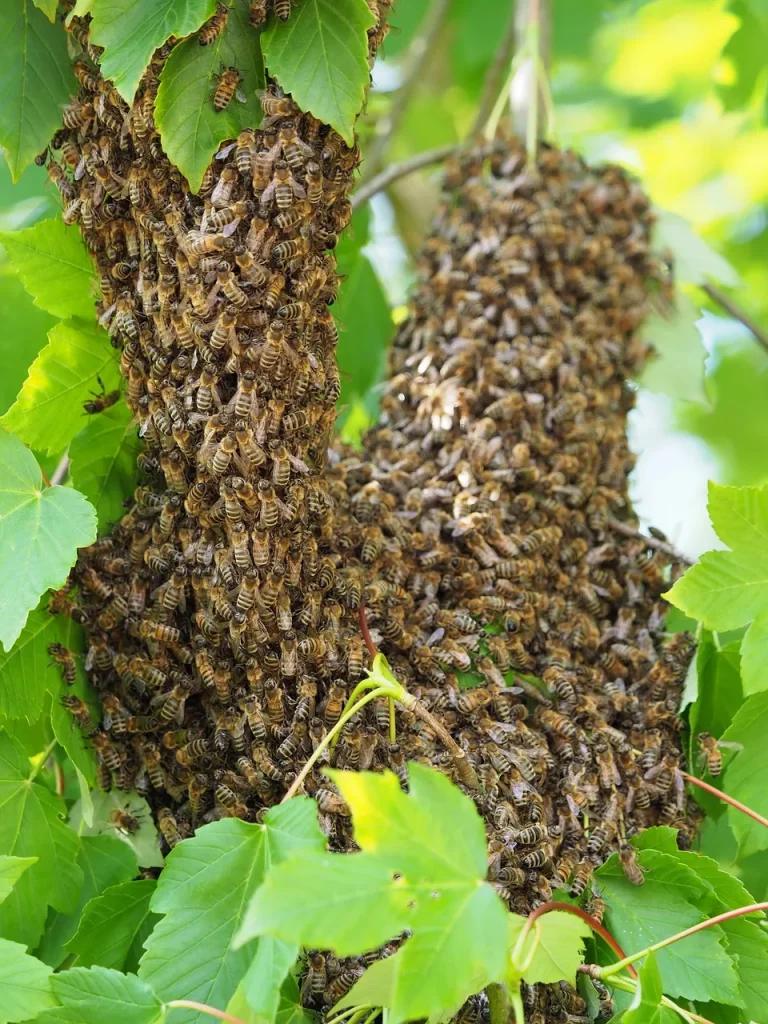Do you have a swarm of Honey Bees?

A swarm of bees will usually arrive in a “cloud of bees” with a very loud buzzing sound. They will settle as a ball, clustering together on a tree, post or wall (see picture). Once a swarm settles, although there will be bees flying to and from the swarm they will generally remain as a ball for a number of hours.
This is the stage at which it is usually possible for a beekeeper to collect a swarm. Volunteer beekeepers will often be willing to attend your property to collect a swarm and take it away to house in a beehive.
If you think you have a swarm, please check first that what you are seeing is definitely honey bees. Sometimes people confuse wasps and bumble bees with honey bees. Please check the BBKA swarms help for further advice on the difference between honey bees, wasps and bumble bees. Beekeepers will only remove honey bees and cannot remove any other insects, including wasps, hornets or bumblebees.
If you are fortunate enough to have found a bumblebee nest, please leave it where it is if at all possible. The natural lifecycle of a bumblebee colony is relatively short, so they are unlikely to cause a significant problem for you. Bumblebees and other bee species are beneficial insects that have a very important part to play in the process of pollination, and we should welcome them!
Honey bee swarms that have collected in a ball are usually very calm and are unlikely to sting unless provoked. Maintain a safe distance from them, contact a volunteer swarm collector from the list, and wait for them to arrive.
If you have checked and know that you have definitely got a swarm of honey bees, a local beekeeper on the swarm collectors’ list may be able to volunteer to remove them. Beekeepers will NOT be able to collect:
- Swarms that are located in an unsafe position – e.g. high trees, unsafe roofs
- Swarms that have taken up residence in an inaccessible area, such as an enclosed roof space, a chimney, or eaves. If it is physically possible and safe to access the space the bees are occupying, it MAY be possible to remove the comb and relocate the colony. If that is not possible, the bees will need to be destroyed by a licensed pest controller.
The West Wilts Branch swarm collection co-ordinator is David Newell. If you are unable to find a swarm collector from the list, or you wish to ask about a swarm, please contact David by e-mail on sj007g0836@blueyonder.co.uk or by phone on 07732 545757 for advice.
